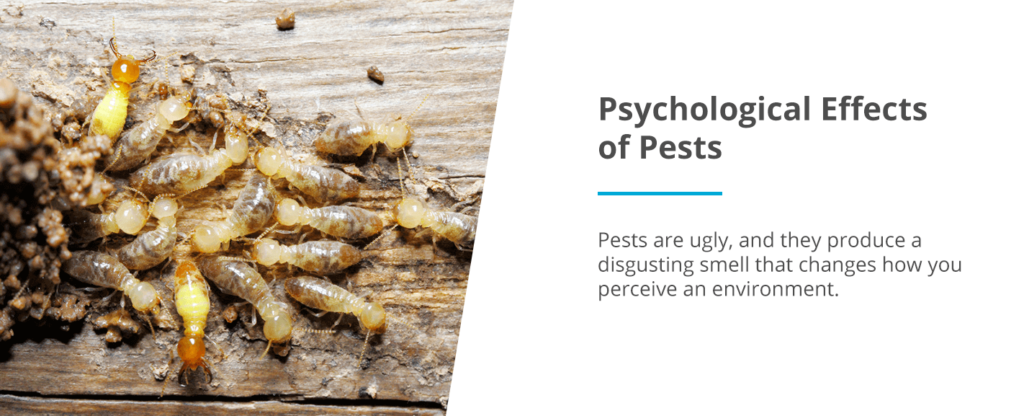Not known Details About Eco Bed Bug Exterminators Dc
Not known Details About Eco Bed Bug Exterminators Dc
Blog Article
Getting The Eco Bed Bug Exterminators Dc To Work
Table of ContentsThe Single Strategy To Use For Eco Bed Bug Exterminators DcThe Basic Principles Of Eco Bed Bug Exterminators Dc Not known Details About Eco Bed Bug Exterminators Dc Eco Bed Bug Exterminators Dc Things To Know Before You Get ThisNot known Factual Statements About Eco Bed Bug Exterminators Dc
Since chemicals are toxic, they are also possibly harmful to human beings, animals, other organisms, and the environment. People who make use of pesticides or routinely come in call with them have to understand the loved one poisoning, possible wellness effects, and preventative procedures to lower direct exposure to the items they make use of. Hazard, or threat, of utilizing chemicals is the capacity for injury, or the level of danger associated with using a pesticide under a given collection of conditions.
However, applicators can lessen or nearly get rid of direct exposure-- and hence minimize threat-- by adhering to the tag guidelines, utilizing personal protective apparel and devices (PPE), and dealing with the pesticide properly. Even more than 95 percent of all chemical direct exposures come from facial exposure, largely to the hands and forearms. By wearing a set of unlined, chemical-resistant gloves, this sort of direct exposure can be nearly eliminated.
The hazardous effects that happen from a single exposure by any kind of route of entrance are described "severe impacts." The 4 routes of direct exposure are facial (skin), breathing (lungs), dental (mouth), and the eyes. Acute toxicity is figured out by checking out the facial toxicity, inhalation poisoning, and dental poisoning of guinea pig.
More About Eco Bed Bug Exterminators Dc
Severe toxicity is measured as the amount or concentration of a toxicant-- the a.i.-- needed to eliminate half of the pets in a test population. This action is generally revealed as the LD50 (dangerous dose 50) or the LC50 (lethal focus 50). In addition, the LD50 and LC50 worths are based upon a solitary dosage and are recorded in milligrams of pesticide per kilogram of body weight (mg/kg) of the guinea pig or in parts per million (ppm).
The reduced the LD50 or LC50 value of a chemical product, the higher its poisoning to humans and animals. Chemicals with a high LD50 are the least poisonous to humans if made use of according to the directions on the product tag. The persistent toxicity of a chemical is figured out by subjecting guinea pig to long-term direct exposure to the energetic component.
The persistent toxicity of a pesticide is harder than severe poisoning to figure out with research laboratory analysis. Products are classified on the basis of their loved one intense poisoning (their LD50 or LC50 worths). Pesticides that are classified as extremely hazardous (Toxicity Classification I) on the basis of either dental, dermal, or inhalation toxicity must have the signal words risk and POISON published in red with a head and crossbones symbol plainly displayed on the front panel of the plan label.
The intense (solitary dose) dental LD50 for chemical products in this group varies from a trace total up to 50 mg/kg. For instance, direct exposure of a couple of declines of a product taken orally might be fatal to a 150-pound individual. Some pesticide items have simply the signal word threat, which informs you nothing regarding the intense toxicity, just that the item can cause extreme eye damage or serious skin irritation
Our Eco Bed Bug Exterminators Dc PDFs
In this group, the intense dental LD50 arrays from 50 to 500 mg/kg. A teaspoon to an ounce of this product can be deadly to a 150-pound individual (bed bug exterminator). Pesticide items categorized as either somewhat harmful or fairly nontoxic (Poisoning Groups III and IV) are required to have the signal word care on the chemical tag

All pesticide toxicity values, worths the Consisting of, can be found on located product's Material Safety Product Safety and security InformationMSDS). Chemical labels and MSDS can be gotten from stores or manufactures - http://tupalo.com/en/users/6407796. The signs of pesticide poisoning can range from a moderate skin irritability to coma or even death.
People likewise vary in their sensitivity to various levels of these chemicals. Some people may reveal no reaction to a direct exposure that may cause severe health problem in others (bed bug spray). As a result of potential wellness worries, chemical individuals and trainers have to acknowledge the usual symptoms and signs of chemical poisoning. The impacts, or symptoms, of pesticide poisoning can be generally specified as either topical or systemic.
More About Eco Bed Bug Exterminators Dc
Dermatitis, or inflammation of the skin, is accepted as the most typically reported topical result linked with pesticide exposure. Some people tend to cough, hiss, or sneeze when exposed to pesticide sprays.
This symptom usually subsides within a couple of mins after a person is eliminated from the exposure to the toxic irritant. Nonetheless, a response to a chemical product that causes somebody not only to sneeze and cough but likewise to develop extreme intense respiratory signs is extra most likely to be a real hypersensitivity or allergy.
Systemic impacts are quite various great post to read from topical impacts. They frequently take place away from the initial factor of get in touch with as a result of the chemical being absorbed right into and distributed throughout the body. Systemic effects frequently consist of nausea or vomiting, vomiting, fatigue, migraine, and digestive problems. In sophisticated poisoning instances, the person might experience modifications in heart rate, problem breathing, convulsions, and coma, which could bring about fatality.
Report this page